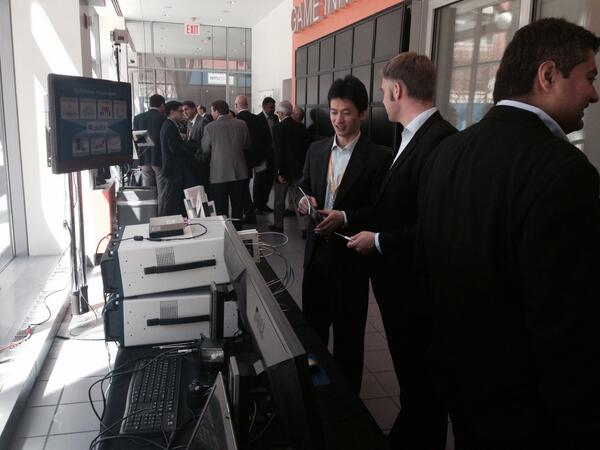Do we really have a shortage of bandwidth? Or do network providers need to simply deploy more of the technology we already have available? That was the essence of the argument that Stanford‘s Dr. Andrea Goldsmith made in her fast paced keynote at the Brooklyn 5G Summit at NYU Engineering. One way providers could expand their capacity dramatically, she argues, is by increasing the number of cells in cellular networks.
Sponsored by NSN (a Nokia company) and NYU WIRELESS, the summit was an effort to get the top academics and industry leaders together to begin building a consensus about what the next generation of wireless will be and what standards should be agreed upon to make it work.
Dr. Goldsmith straddles those two identities. She’s a researcher who is well-regarded enough to earn one of the plum speaking spots at this first of its kind gathering but she’s also started her own companies.
Here’s a few of the more thought provoking points Dr. Goldsmith made during her Thursday talk:
- ‘The Internet of Things’ movement aimed at connecting anything with a plug to the web will define 5G. We’ll see something like 50 billion sharing information through the cloud by 2020.
- ‘Software Defined Networking’ is a critical new field where network hardware on the ground won’t hold its software locally, but draw on software in the cloud to run itself.
- While many people are very happy with how far 4G LTE has come and see great potential still, Goldsmith said, “What we don’t have is good performance and high reliability.” That’s critical, for example, to better use phones as real sensors.
- You often hear arguments that our existing networks are maxed out. In information theory, this is what’s known as “The Shannon Limit.” The truth is, though, Goldsmith argued, we don’t actually know yet what that Shannon Limit is.
Goldsmith argues especially strongly that providers are leaving a lot of bandwidth on the table by not building more cells within cells. The reason wireless networks are referred to as “cellular” is because they do really look like cell systems in biology. Areas are divided up into cells, defined by access point (usually a tower, but it doesn’t have to be). Users in different cells can use the same bandwidth, because each cell has access to the whole array of bandwidth.
So the smaller a cell is, the fewer people (or devices) will try to use a given slice of bandwidth.
5G millimeter wave technologies (like we’ve written about here) could make it a lot cheaper to build more cells within cells, without huge towers, to allow the existing network to go even further (and maybe eventually get the next generation of mobiles on an all new one).
Join the conversation!
Find news, events, jobs and people who share your interests on Technical.ly's open community Slack
